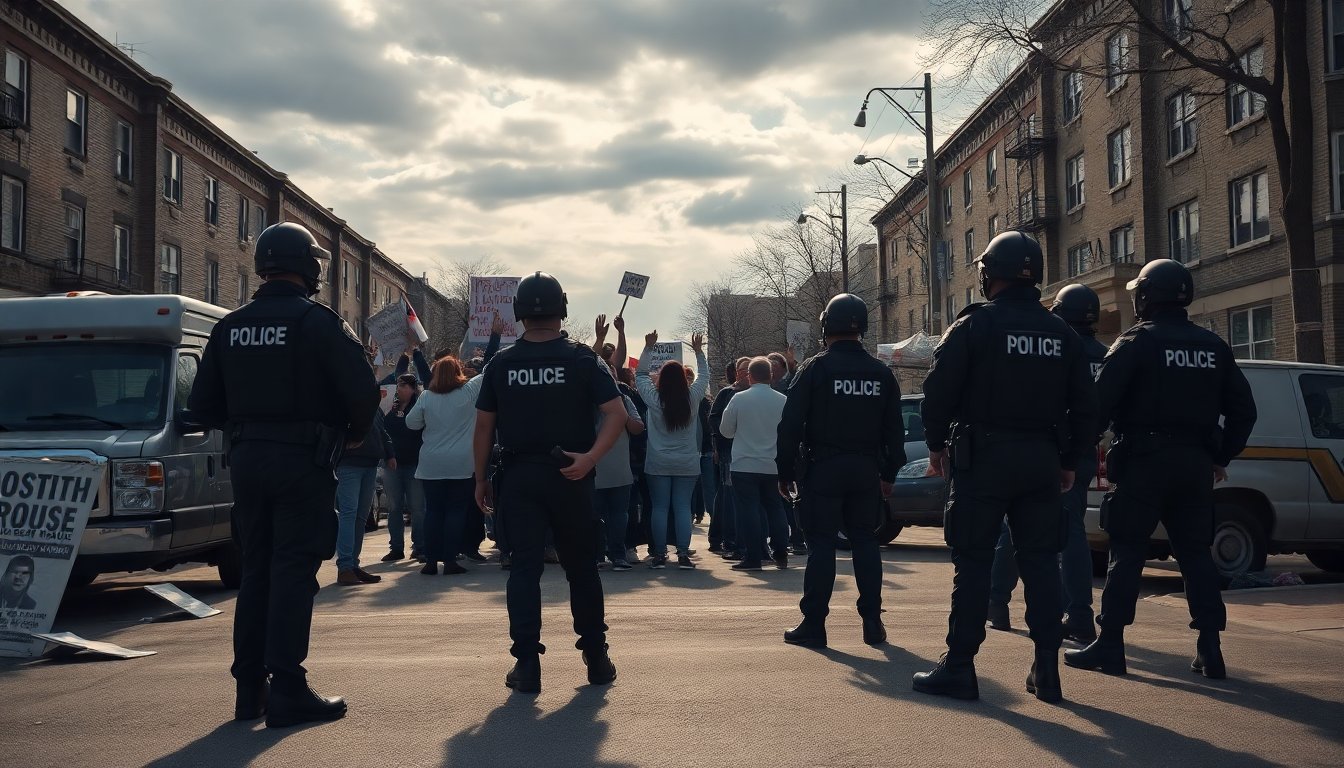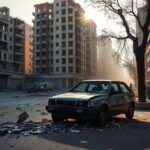Table of Contents
On a tumultuous Saturday in Chicago, a woman was shot by personnel from the U.S. Border Patrol during a confrontation involving numerous protesters and federal immigration agents. This incident occurred in the Brighton Park neighborhood, where demonstrators had gathered to oppose immigration enforcement actions by the U.S.
Immigration and Customs Enforcement (ICE). The protests escalated as activists attempted to block ICE vehicles, resulting in a chaotic clash.
The conflict began when demonstrators, including an unidentified woman, attempted to obstruct vehicles belonging to the U.S. Immigration and Customs Enforcement (ICE).
The Department of Homeland Security reported that tensions escalated when protesters started ramming vehicles into those used by ICE. Fortunately, law enforcement officials did not sustain serious injuries during the incident. The woman, a U.S. citizen, successfully drove herself to a nearby hospital after the shooting, although information regarding her current condition remains limited.
Federal response and escalating tensions
In response to the escalating situation, U.S. Secretary of Homeland Security Kristi Noem announced on social media the deployment of additional special operations units to Chicago. This strategy aims to restore order amid the protests that have erupted in the city.
As a result, ICE agents have employed pepper spray and rubber bullets during clashes with demonstrators, creating an atmosphere reminiscent of combat conditions.
Protests against federal actions in multiple cities
Protesters have voiced their concerns regarding what they perceive as excessive use of force by federal agents in Chicago and other Democratic-led cities, including New York, Los Angeles, Washington, D.C.
, and Portland. The aggressive tactics employed by law enforcement have drawn significant criticism from activists, who argue that these measures violate civil rights and freedoms.
On the same day, Illinois Governor JB Pritzker learned from the Pentagon about the deployment of 300 members of the National Guard.
The governor expressed his dismay at the Trump administration’s ultimatum, which indicated that he should either call up the troops or face federal intervention. He characterized this demand as “outrageous and un-American,” underscoring the necessity of local governance and the autonomy of state officials.
Political implications and local governance
Governor J.B. Pritzker criticized the Trump administration for what he termed a “manufactured performance” that would disrupt the lives of National Guard members and their families. He emphasized that local law enforcement had already been working together to ensure the safety of the Immigration and Customs Enforcement (ICE) facility, negating the need for federal troops. “This is about control, not safety,” Pritzker remarked, suggesting that the deployment of federal resources was driven more by political motives than by genuine concerns for public safety.
Comparative analysis of federal interventions
The federal government’s increased presence in Chicago reflects similar actions taken in other regions of the United States. Previously, former President Trump deployed the National Guard to Los Angeles and established a contentious law enforcement presence in Washington, D.C.. In response, California Governor Gavin Newsom filed a lawsuit to prevent the deployment in his state, successfully securing a temporary injunction from federal court. The Trump administration has since appealed this decision, intensifying the conflict over federal oversight.
In Oregon, a federal judge has issued a temporary injunction preventing the deployment of troops to Portland. Governor Tina Kotek welcomed this decision, stating it underscores the need to protect democracy from unnecessary federal intervention. Kotek emphasized, “There is no insurrection in Portland,” pointing out that the only threats stem from federal actions that undermine democratic norms.
Meanwhile, protests at the ICE facility in Chicago have gained traction among activists, who are organizing nightly demonstrations against the agency’s practices. As events develop, the interplay between local governance, federal authority, and civil rights remains a significant concern in the ongoing discourse surrounding immigration enforcement and public safety.





